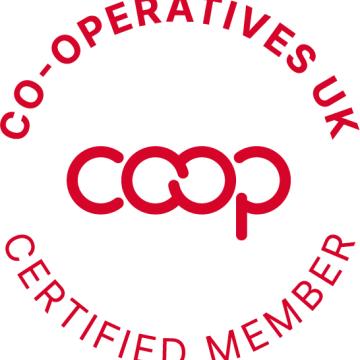Dissolution or Cancellation for solvent societies

Whilst co-operatives have proved more resilient than other forms of business, especially during the pandemic, there are a number of reasons why a co-operative may need to cease trading. This section outlines options for co-operatives and community benefit societies, and the next steps.
Who is this guidance for
This document is aimed at societies who are solvent (those who can afford to pay or do not have any debts or liabilities) and wish to end registration of a co-operative or community benefit society.
If your organisation is going through financial difficulties we have published some guidance for societies facing financial strife.
For insolvent organisations, we recommend seeking advice from an insolvency practitioner or the Insolvency Service website for more information. Alternatively, you can contact our advice team for further information.
When a solvent society decides it no longer has a need to exist, it can end the society and close through two routes – Dissolution or Cancellation.
Dissolution is where the assets and property of the society are redistributed and the society’s registration is brought to an end.
Alternatively, a society can have its registration cancelled by the Financial Conduct Authority (FCA). This reverses the effect of registration and the society will no longer be classed as a legal entity. A society can only request a cancellation if it is solvent, meaning that the society has assets in excess of its liabilities and is able to settle all liabilities before doing so.
Dissolution
Before a society takes the decision to begin dissolution proceedings we would expect that the board, and any senior management team, has looked at all the options available to the society to first and foremost protect the continuity of that society.
If the board decides dissolution is the best option, they will need to call a general meeting (a meeting of the members of the society) to discuss the planned dissolution and the reasons why it is being recommended to the members.
The members must then be allowed to vote on this resolution based on the explanation and evidence provided by the board. As this is potentially a major decision for the society, members will need to be given the opportunity to be involved in the discussion and the final decision. The Board should ensure that it provides adequate notice of any meetings, as per the notice period set out in the rules.
Instrument of Dissolution
Societies can dissolve by an instrument of dissolution. The instrument needs to be drafted, which means the society will need to complete the form provided by the FCA before seeking the approval of the members, and then approved by either:
- Three-quarters of all the society's members signing the instrument to show their consent to it, whether that is in person or remotely is up to the society; or
- For a dormant (not trading/undertaking any business or receiving income, for example investments) society, passing the instrument by a special resolution at society meetings
The FCA has provided an Instrument of Dissolution statutory form that should be followed and completed when a society is ready to dissolve, that can be downloaded from the FCA website. The FCA states that the form must contain:
- The society’s assets and liabilities in detail. For example Assets are cash, investments, inventory, equipment, property and vehicles etc. Liabilities can be bank debt, mortgage, money owed to suppliers, outstanding wages and any unpaid tax bills.
- The number of members and the nature of their interests in the society. For example, any shares invested in the society or any loans and bonds they may have in their name.
- Any creditors’ claims, and the provision to be made for their payment.
- The intended appropriation or division of the society’s funds and property (unless the instrument states that this is to be left to the award of the FCA or Prudential Regulation Authority PRA) This means the society would need to tell the FCA how any remaining funds and property will be distributed. This will require the society to look into its Rules to check its dissolution clause to determine whether they can distribute funds amongst the members or whether there are any restrictions on this.
The form provides guidance to help you to include the right information.
Dissolution must be carried out in accordance with the society’s rules. Some societies will also have a statutory asset lock in the rules. If this is the case, the society can only distribute any funds in accordance with that asset lock.
A society's annual return and accounts for that year need to end on the date of the Instrument of Dissolution.
Once the Instrument of Dissolution is submitted to the FCA, it is binding on members and cannot be changed/reversed.
Interested people will have three months to challenge the resolution and dissolution of the society so the FCA recommends that societies do not distribute assets until the three month challenge window has passed. An Interested Person is anyone who may be affected by the dissolution who may be owed by the society, or are hoping to make money from the business being dissolved such as employees, suppliers, customer and shareholders.
Once the three months is over, the society can distribute the assets in the way that was detailed in the Instrument of Dissolution.
When this process is complete, the society should send the FCA a section 126 certificate (also available on the FCA website). This simple form is a declaration that all the assets have been dealt with and transferred to the persons/organisations entitled. The FCA will process the paperwork and the society’s record on the Mutual’s Register will be updated to confirm the dissolution. This then completes the dissolution process.
Cancellation of a society
The other option for a society wishing to end their registration with the FCA – one that hasn’t traded for a while, or has never traded and has zero or minimal assets and liabilities (less than £1,000) – is to ask the FCA to cancel its registration. society must not be insolvent.
The society will need to decide that cancellation is the best or only option and for this to happen the board would need to have explored all alternative options and put together a clear plan to enable the members to understand. The board would then call a general meeting – a meeting of the members of the society – to discuss the planned cancellation and the reasons why it is being recommended to the members.
The members must then be allowed to vote on this resolution based on the explanation and evidence provided by the board. As this is potentially a major decision for the society, members will need to be given the opportunity to be involved in the discussion and the final decision. The Board should ensure that it provides adequate notice of any meetings, as per the notice period set out in the rules.
A society's registration cannot be restored when it has been cancelled. There is no process of ‘re-registration’. Cancellation is a final, irreversible act.
As with dissolution, the society’s rules prescribe what rights members have for their capital to be returned and how any funds will be distributed after the society has paid its liabilities. These rules should be taken into account if a society is being cancelled.
The FCA states in their guidance that it will cancel a society if:
- It has ceased to carry on any business
- It has limited (e.g. less than £1000) assets or liabilities; and
- It is not insolvent.
Again the FCA has published a helpful form to make the cancellation process easier. You can download the form on the FCA website. Societies must send a completed form to the FCA and justify how the society meets the cancellation criteria.
The FCA will also:
- Ask for confirmation of how the decision to cancel the society’s registration was reached;
- Require a financial statement showing the latest financial position of the society: and
- Check whether any outstanding fees owed to FCA have been paid. This could be any outstanding filing fees that the society has never paid or a penalty fee for failing to submit an annual return. If the latter is the case the FCA may well be initiating cancellation proceedings themselves rather than a voluntary cancellation from the society.
The society should also be up to date with their annual returns and account submissions.
If the society is cancelling because it has completed a transfer of engagements the society will need to complete the section 126 form confirming that its property has been transferred to those entitled to it. A transfer of engagements means the society is transferring all business undertakings, including any assets and liabilities, stock, property and money to another society. This includes the memberships and shareholdings of the members of the transferring society.
Any questions?
If your co-operative has and questions or requires support, please contact our advice team.

Support for your co‑op

Finance advice and support
